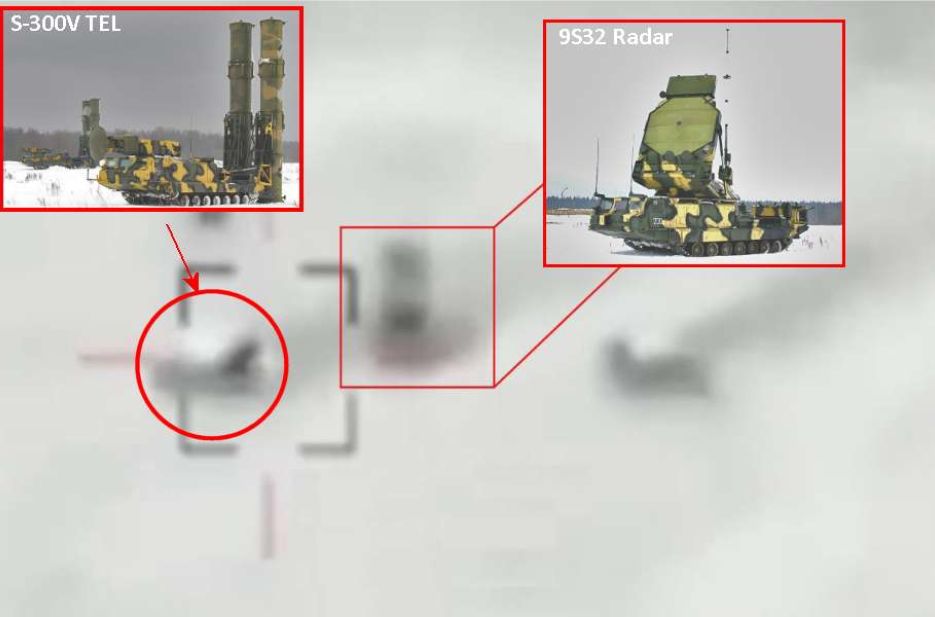Breaking News
Another Success for US ATACMS MIssile as Ukrainian Forces Destroy Russian S-300V Air Defense System.
On July 16, 2024, the Ukrainian armed forces achieved another significant success by using American ATACMS missiles to destroy a Russian S-300V air defense missile system battery and its critical 9S32 guidance radar near Mariupol.
Follow Army Recognition on Google News at this link

Satellite image showing the destruction of a Russian S-300V launcher unit and 9S35 radar by ATACMS missile. (Picture source: Telegram)
The ATACMS attack carried out on July 16, 2024, targeted and successfully neutralized several key components of the Russian S-300V air defense missile system. Several launchers and the central radar system were obliterated, severely crippling the operational effectiveness of the S-300V battery. The precision strike has been hailed as a tactical victory, demonstrating the advanced capabilities of the American-made ATACMS missile system in modern warfare.
The S-300V is a Russian-made advanced surface-to-air missile (SAM) system designed for air defense based on tracked vehicles. It is part of the S-300 family but is specifically tailored for army use, providing protection against aircraft, cruise missiles, and ballistic missiles. The system features multiple launchers and a range of missiles capable of engaging targets at various altitudes and distances. The S-300V is known for its high mobility, robust tracking, and interception capabilities, making it a key component of Russia's air defense network.
The S-300V air defense missile system is known for its impressive range and altitude capabilities, as well as its advanced radar detection features. It can intercept targets at ranges of up to 200 kilometers (about 124 miles), depending on the specific missile variant used. In terms of altitude, the system is capable of engaging targets from as low as 25 meters (about 82 feet) to as high as 30 kilometers (about 98,425 feet).
The S-300V air defense missile system includes several radar components essential for target detection, tracking, and engagement. The primary radar, the 9S32 multi-channel missile guidance radar, can detect targets at ranges of up to 300 kilometers (about 186 miles). It is capable of tracking and engaging multiple targets simultaneously, with the ability to track up to 24 targets and engage up to 6 targets at the same time. This radar can identify and track a variety of targets, including aircraft, cruise missiles, and ballistic missiles, with a high degree of accuracy. The radars associated with the S-300V system are designed to operate in various environmental conditions, ensuring reliable performance and robust air defense capabilities.
Military analysts have underscored the importance of this development, noting that the successful use of ATACMS missiles could shift the balance of power in the ongoing conflict. The high-precision, long-range ATACMS (Army Tactical Missile System) has been instrumental in targeting high-value assets, and this recent strike exemplifies its effectiveness in neutralizing sophisticated defense systems.
Ukrainian military officials have expressed their satisfaction with the operation, highlighting the collaborative efforts with American allies in enhancing their defensive and offensive capabilities. The destruction of the S-300V battery and its guidance radar is a testament to the precision and power of the ATACMS missile system.
The Army Tactical Missile System (ATACMS) is an American-made surface-to-surface missile system renowned for its precision strike capabilities. It has an operational range of approximately 300 kilometers (about 186 miles), depending on the specific variant in use. This long-range capacity allows it to target and destroy high-value assets deep within enemy territory. The missile system employs a sophisticated guidance mechanism that combines GPS with inertial navigation systems, ensuring a high degree of accuracy even over extended distances.
The ATACMS can be fitted with various types of warheads, which enhances its versatility in combat scenarios. These include high-explosive unitary warheads designed to deliver a powerful blast effect, as well as cluster munitions that can disperse multiple submunitions over a wide area, increasing the potential for destruction. This makes the ATACMS particularly effective against a range of targets such as enemy air defenses, command and control centers, and concentrations of troops and equipment.
A critical component of the ATACMS system is its launcher vehicle. The missiles are launched from the M270 Multiple Launch Rocket System (MLRS) or the M142 High Mobility Artillery Rocket System (HIMARS). The M270 MLRS is a tracked vehicle, providing robust mobility and the ability to operate in various terrains, while the M142 HIMARS is a lighter, wheeled vehicle that offers increased speed and flexibility. Both launchers can carry and fire a single ATACMS missile, enabling rapid deployment and high readiness for launch operations.
The ATACMS missile's power of destruction lies in its ability to deliver precise, high-impact strikes that significantly disrupt enemy operations and infrastructure. Its use in modern warfare provides a critical advantage, allowing forces to engage strategic targets with minimal risk to friendly units.


























